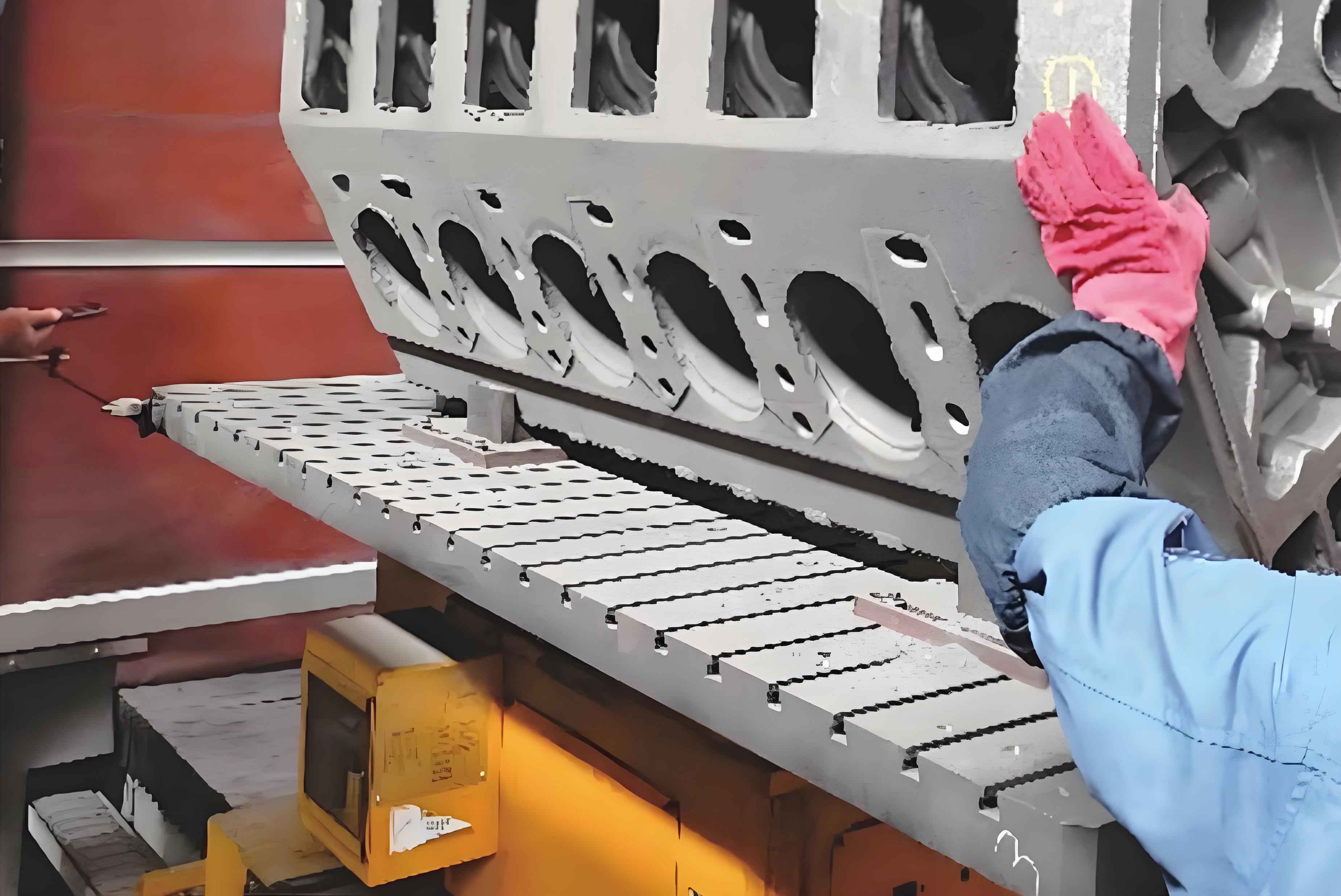The engine cylinder block serves as the structural backbone of internal combustion engines, directly influencing power output, fuel efficiency, and emissions. As automotive industries globally strive for lightweight, high-performance, and eco-friendly solutions, lost foam casting has emerged as a transformative manufacturing process. This article explores the application of lost foam casting in producing engine cylinder blocks, emphasizing process optimization, material science, and quality assurance.

1. Introduction to Lost Foam Casting
Lost foam casting (LFC) is a near-net-shape manufacturing technique that replaces traditional sand casting with expendable foam patterns. The process involves:
- Foam Pattern Creation: A polystyrene (EPS) model replicating the engine cylinder block geometry is pre-expanded, molded, and assembled.
- Coating and Drying: The foam pattern is coated with refractory material to enhance surface finish and structural integrity.
- Sand Molding: The coated pattern is embedded in dry sand under vibration, and molten metal is poured, displacing the foam via pyrolysis.
Compared to conventional methods, LFC reduces machining waste by 30–40%, eliminates core-making steps, and enables complex geometries. For engine cylinder blocks—comprising intricate features like coolant jackets, crankshaft bearings, and oil passages—LFC offers unparalleled precision.
2. Material and Process Parameters
2.1 Material Composition
Engine cylinder blocks are typically cast using HT250 low-alloy gray iron, with chemical composition tightly controlled (Table 1).
| Element | Composition Range (%) |
|---|---|
| C | 3.10–3.30 |
| Si | 1.60–1.80 |
| Mn | 0.60–0.75 |
| Cu | 0.6–1.0 |
| Cr | 0.3–0.5 |
| P | ≤0.050 |
| S | ≤0.060 |
Table 1: Chemical composition of HT250 alloy for engine cylinder blocks.
The alloy ensures a tensile strength ≥250 MPa and hardness of 187–255 HBS after stress-relief annealing.
2.2 Foam Pattern Optimization
The quality of the engine cylinder block depends critically on foam pattern precision. Key parameters include:
- EPS Density: Pre-expanded EPS beads must achieve a density of 20–21 g/L, with final foam patterns stabilized at 23–24 g/L.
- Aging Time: Foam patterns require 20 days of natural aging to minimize residual moisture and volatiles.
The dimensional stability of patterns is governed by the relationship:ΔL=α⋅L0⋅ΔTΔL=α⋅L0⋅ΔT
where ΔLΔL is thermal expansion, αα is the EPS thermal expansion coefficient (6×10−5 °C−16×10−5°C−1), L0L0 is initial length, and ΔTΔT is temperature change during pyrolysis.
3. Critical Process Stages
3.1 Mold Design and Partitioning
Horizontal partitioning is preferred for engine cylinder block molds to simplify demolding and ensure alignment of intake/exhaust ports. Mold cavities are optimized using finite element analysis (FEA) to predict stress distribution:σmax=FA≤σyieldσmax=AF≤σyield
where σmaxσmax is maximum stress, FF is clamping force, and AA is cross-sectional area.
3.2 Gating System Design
A closed gating system (Frunner>Fgate>FingateFrunner>Fgate>Fingate) with a ratio of (1.3–2):(1–1.5):1(1.3–2):(1–1.5):1 ensures uniform filling. Multi-point ingates minimize turbulence (Figure 2). Pouring time is critical:tpour=VmetalQ˙≈35–40 secondstpour=Q˙Vmetal≈35–40seconds
where VmetalVmetal is molten metal volume and Q˙Q˙ is flow rate.
3.3 Sand Compaction and Vacuum Control
Dry silica sand (40–70 mesh) is vibrated at frequencies tuned to achieve 92–95% compaction density. Vacuum levels of -0.035 to -0.040 MPa prevent gas entrapment.
4. Quality and Performance Metrics
4.1 Defect Mitigation
Common defects in engine cylinder blocks (e.g., misruns, porosity) are addressed through:
- Coating Thickness: Refractory coatings maintained at 1.0–1.5 mm.
- Pouring Temperature: Optimal range of 1480–1500°C for HT250 alloy.
4.2 Production Efficiency
Implementation results from Chengdu Casting Co. demonstrate:
- First-pass yield: >95%
- Machining acceptance rate: 99%
- Process yield: 91%
5. Future Directions
Advancements in LFC for engine cylinder blocks include:
- Automated Pattern Assembly: Robotics for precision gluing and alignment.
- AI-driven Process Control: Real-time monitoring of sand compaction and pyrolysis.
- Sustainable Materials: Bio-degradable EPS alternatives.
6. Conclusion
Lost foam casting revolutionizes engine cylinder block manufacturing by merging precision, sustainability, and cost-efficiency. With rigorous control over foam patterns, gating systems, and thermal parameters, LFC meets the stringent demands of modern automotive engines. As industries adopt greener practices, this technology will remain pivotal in achieving lightweight, high-performance engine designs.
